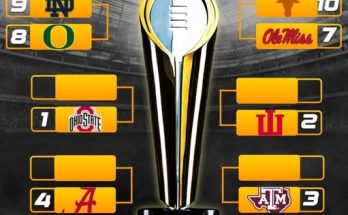The Duke Blue Devils have long been a powerhouse in college basketball, consistently attracting top-tier talent under the guidance of legendary coach Mike Krzyzewski and, more recently, Jon Scheyer. This off-season, Duke finds itself in an enviable yet challenging position: returning 50% of the nation’s top-ranked 2024 recruiting class. While many elite programs face the annual struggle of roster turnover due to the NBA Draft and transfers, Duke’s ability to retain half of its star-studded freshman class provides a rare foundation for continuity and success. This retention speaks volumes about the program’s culture, development opportunities, and the allure of competing for a national championship under Scheyer’s leadership.
The 2024 recruiting class was nothing short of spectacular for Duke, featuring five of the top 25 high school players in the country. Headlined by potential one-and-done prospects, the group was expected to make an immediate impact. However, in today’s college basketball landscape, retaining such talent for more than a year is increasingly difficult. The NBA’s allure, combined with the transfer portal’s flexibility, often leads to significant roster churn. Yet, Duke has managed to bring back three of its six incoming freshmen, a rarity in modern college hoops and a testament to the program’s ability to balance immediate success with long-term player development.
Among the returnees is five-star forward Cooper Flagg, the crown jewel of the 2024 class and a projected top pick in the 2025 NBA Draft. Flagg’s decision to return for a sophomore season is a massive win for Duke, as his versatility, defensive prowess, and offensive skill set make him a cornerstone for the Blue Devils’ title aspirations. His return suggests that Scheyer and his staff have successfully communicated a vision that prioritizes both team success and individual growth. Flagg’s presence alone elevates Duke’s ceiling, but his leadership as a sophomore will be equally critical in integrating new pieces into the lineup.
Joining Flagg as returnees are four-star recruits Darren Harris and Patrick Ngongba II. Harris, a sharpshooting wing, showed flashes of elite scoring potential during his freshman campaign, and his decision to stay provides Duke with much-needed perimeter shooting. Ngongba, a physically imposing center, offers depth in the frontcourt and a developing offensive game that could flourish with another year in Duke’s system. Their returns signal a belief in Scheyer’s ability to develop players beyond their freshman seasons, a key factor in maintaining Duke’s status as a perennial contender.
Of course, the off-season hasn’t been without departures. Five-star guards Isaiah Evans and Kon Knueppel, along with forward Khaman Maluach, have moved on to the professional ranks, leaving gaps in Duke’s rotation. Evans, a dynamic scorer, and Knueppel, a polished offensive weapon, were expected to be key contributors, while Maluach’s shot-blocking and athleticism provided a unique defensive presence. Losing three top-20 recruits would cripple most programs, but Duke’s ability to retain half of its class softens the blow and provides a bridge to the next wave of talent.
Scheyer has also been active in the transfer portal, adding experienced pieces to complement his returning stars. The arrival of a veteran point guard and a stretch forward ensures that Duke won’t rely solely on freshmen to carry the load. This balanced approach—mixing elite high school talent with seasoned transfers—has become a hallmark of Scheyer’s early tenure, and it’s a strategy that could pay dividends in March.
The return of 50% of the #1 ranked class also has broader implications for Duke’s program identity. In recent years, the Blue Devils have been synonymous with the one-and-done model, churning out NBA talent after a single season. While that pipeline remains intact, the decision of players like Flagg, Harris, and Ngongba to stay suggests a shift toward a more balanced roster construction. Retaining elite talent for multiple seasons could give Duke a strategic edge over rivals who face near-total roster overhauls each year.
Looking ahead, Duke’s 2024-25 season will be defined by how well its returning sophomores mesh with incoming freshmen and transfers. The leadership of Flagg, the shooting of Harris, and the interior presence of Ngongba provide a stable core, but Scheyer will need to integrate new faces quickly. The ACC remains fiercely competitive, with North Carolina, Virginia, and Clemson all poised to challenge for conference supremacy. Duke’s ability to blend continuity with new talent will determine whether it can reclaim its place atop the college basketball world.
In an era where roster stability is increasingly rare, Duke’s success in retaining half of its top-ranked class is a minor miracle. It reflects the program’s enduring appeal, the strength of Scheyer’s player development philosophy, and the allure of competing for a national title. While the departures of Evans, Knueppel, and Maluach sting, the returns of Flagg, Harris, and Ngongba ensure that Duke will enter the season as a favorite to cut down the nets. For a program accustomed to reloading, this off-season represents a rare opportunity to build on the foundation of a talented returning core—a luxury that could make all the difference when March arrives.



